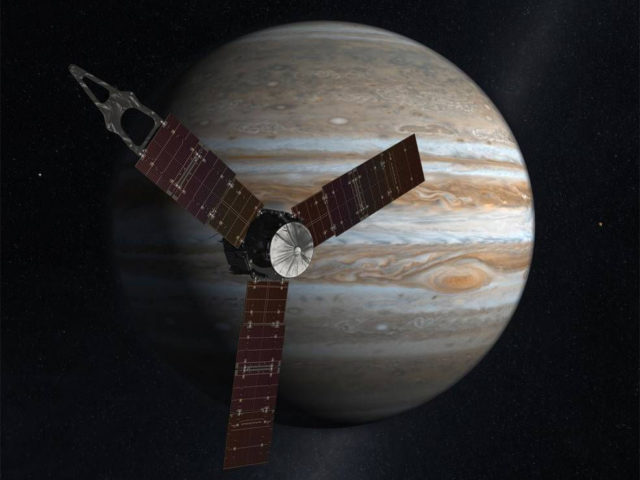
NASA’s Juno spacecraft will reach Jupiter Monday (July 4) after a five-year journey through deep space. The probe will study the structure and evolution of the solar system’s largest planet from orbit, taking measurements for more than a year despite Jupiter’s intense radiation environment. You can watch Juno LIVE Monday beginning at 10:30 PM EDT HERE
“Jupiter is the planet on steroids in our solar system; everything about it is extreme,” Juno principal investigator Scott Bolton, of the Southwest Research Institute in San Antonio, told Space.com.
The mission has several major science goals. One is to learn how much water is inside Jupiter, which should yield insights about the amounts of water that were present in the solar system’s early days. [Juno’s Jupiter Arrival: Complete Coverage]
Here are the 7 fun facts about the Juno Mission. The explanation for each can be found HERE
1. Jupiter’s radiation will take a toll on Juno – Juno will remain in orbit about 20 months.
2. Juno only has about as much hard-drive space as your laptop – Juno’s computer has 256 MB of flash drive and 128 MB of DRAM.
3. Juno is the most distant solar-powered spacecraft ever – NASA Juno can generate enough power from it’s three huge solar panels.
4. Juno will spin while doing science – Juno spins to remain stable. A system used by NASA for Pioneer 10 and 11.
5. Juno will take nearly three months to reach its final orbit – It will take Juno 107 days in “capture orbit” before finally inserting itself into Jupiter’s orbit.
6. Juno has an unusual final orbit – High levels of radiation will force NASA to keep Juno in an elongated orbit to minimize the radiation.
7. Juno will die a dramatic death – you’ll need to read this one to understand why.
Fly along with NASA’s Juno spacecraft at Jupiter. Turn on your sound to find out more about the planet, the mission and the spacecraft. Click and drag the view on your computer, or move your mobile device up and down and around to explore the entire 360-degree experience. Note: Not all browsers support viewing 360 videos. YouTube supports playback of 360-degree videos on computers using Chrome, Firefox, Internet Explorer, and Opera browsers. Use the YouTube app to view it on a smart phone.
Video by NASA via YouTube[/vc_message]












